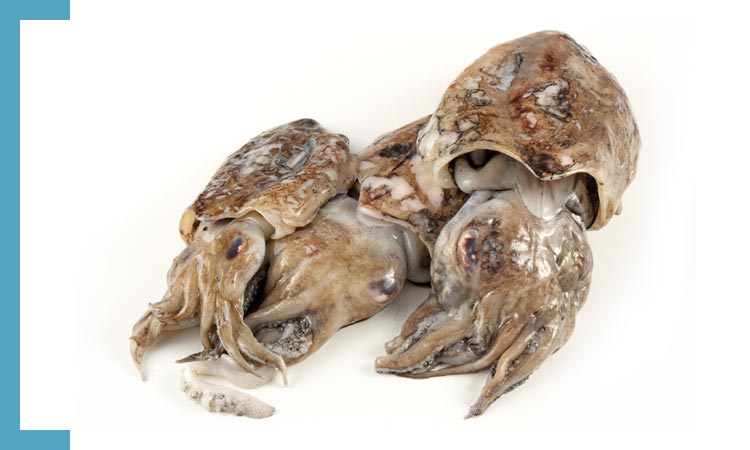
Scientific name: Sepia officinalis
The cuttlefish is part of the mollusc family like clams, but belongs to the class of cephalopods which includes the most advanced molluscs in which the shell is internal to the body and rather small.
Characteristics
The Mediterranean cuttlefish can reach 35 cm in length (common from 15 to 25 cm), has an oval-shaped body surrounded by a fin for movement, a mouth with a beak with around ten tentacles, two of which are longer and equipped with suction cups. Like all more advanced cephalopods it can change colour thanks to specialized cells in the epidermis, the chromatophores. The colours (from brown-black to yellow) and the design variations are used by the animal to communicate. to blend in and defend against predators.
The internal shell of the cuttlefish is white and is commonly called cuttlefish bone which together with the ink sac is among its peculiar Characteristics. In dangerous situations the ink is released from the bag located between the gills and dispersed with the aid of a jet of water emitted from the siphon, thus confusing the predator and creating a diversion for the escape.
Habitat
The cuttlefish lives in the depths up to 100m and prefers sandy or muddy areas in which it can camouflage itself easily and ambush prey. In spring it is often found in large quantities in the coastal regions of Posidonia and Zoostera near the sandy bottoms covered by grasses. The rest of the year it is found in deeper waters. Even in the periods in which it approaches the coast, the limited depth of the Adriatic Sea allows it to live in a wide area of seabed.
Sources:
 English
English


